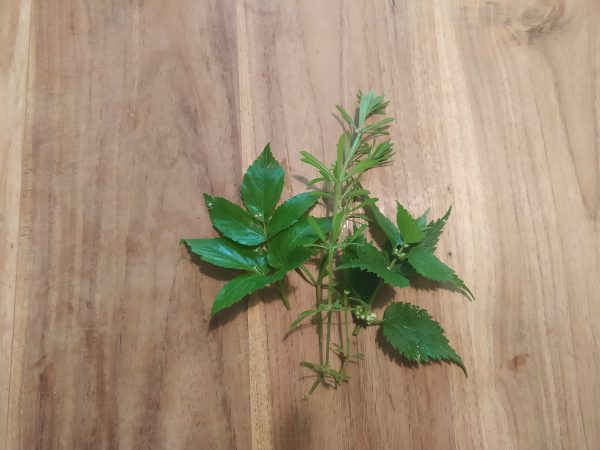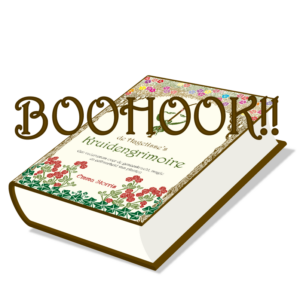Weed pesto recipe: foraging and cooking with wild plants

Many of you indicated in the poll that you would like to get your hands on my recipe for wild plant pesto. So, today I am posting this yummy recipe for weed pesto. What you most of all need for this delicious weed pesto are plants that you can forage in many places in temperate climates. For this recipe I used ground elder, cleavers, dead nettle, garlic mustard, dandelion leaves and a little bit of ground ivy. But you can also use other plants, such as stinging nettle and plantain.
I got most of the plants from my own garden. At the moment, at least 25 edible plant species are growing there, and that’s without me having planted anything. I only got the garlic mustard from a nearby nature reserve. I had to search a bit for that one, because the roadsides had unfortunately been mowed early this year. No idea why, but they tend to do more things in my municipality that I don’t understand, such as mowing the lawn every week, regardless of the weather conditions and using pesticides that are known to damage people, animals and the environment. But that’s a different subject altogether… let’s make weed pesto!
The ingredients of this foraged weed pesto
As I said, you can use several plants to make a weed pesto or wild plant pesto.
This time around, I made a pasta dish for 4 people with a large appetite and the quantities mentioned are therefore for 4 to 6 people. Weighing is a bit difficult when foraging, which is why I use other types of measurements. Take a large bucket or basket outside with you and put your plants loosely in it. So don’t cram them into a too small container.
- 5 hands of ground elder
- 5 handfuls of cleavers
- 3 handfuls of dead nettle, the flowers can simply be added to the pesto
- 2 handfuls of garlic mustard
- 2 handfuls of dandelion leaves
- 6-8 ground ivy leaves
- A bunch of fresh chives
- A bunch of fresh parsley
- A bunch of fresh thyme
- 2 large cloves of garlic
- A generous handful of cashews
- A small handful of pine nuts
- About 150 grams of old cheese cut into small pieces or grated
- 1 coffee spoon of dried oregano
- 1 coffee spoon of dried basil
- Salt and pepper to taste
- A cup of good quality olive oil
How to turn this into a creamy wild plant pesto
Wash all your ingredients for your weed pesto thoroughly and drain in a colander. I usually remove the stems from the ground elder and the garlic without garlic, because they can be a bit too stringy. Next, put everything into a large bowl, including herbs, salt, pepper and oil.
Grab your hand blender and grind the lot to a pulp, chopping everything up thoroughly and stirring regularly. If you don’t have a hand blender at your disposal, you can chop up all the ingredients first and then, little by little, pound them into a paste in a mortar. The wild plant pesto is ready when you have a fairly smooth, firm, homogeneous looking mass inside your bowl.
How you to use the weed pesto
Now you cover the bowl with the wild plant pesto while you prepare the rest of the meal. I just put a big plate on top of the bowl. Now, prepare the pasta of your choice as you normally would. After you have drained the pasta, put it back into the pan. At this point, I stir 4 beaten eggs and a dash of olive oil into the pasta. Then I add the weed pesto. Heat thoroughly on low heat and serve.
Rather eat a vegan variant of this dish? Add nutritional yeast flakes to taste instead of the cheese. In that case, you should also leave out the eggs, of course. Enjoy your meal!




